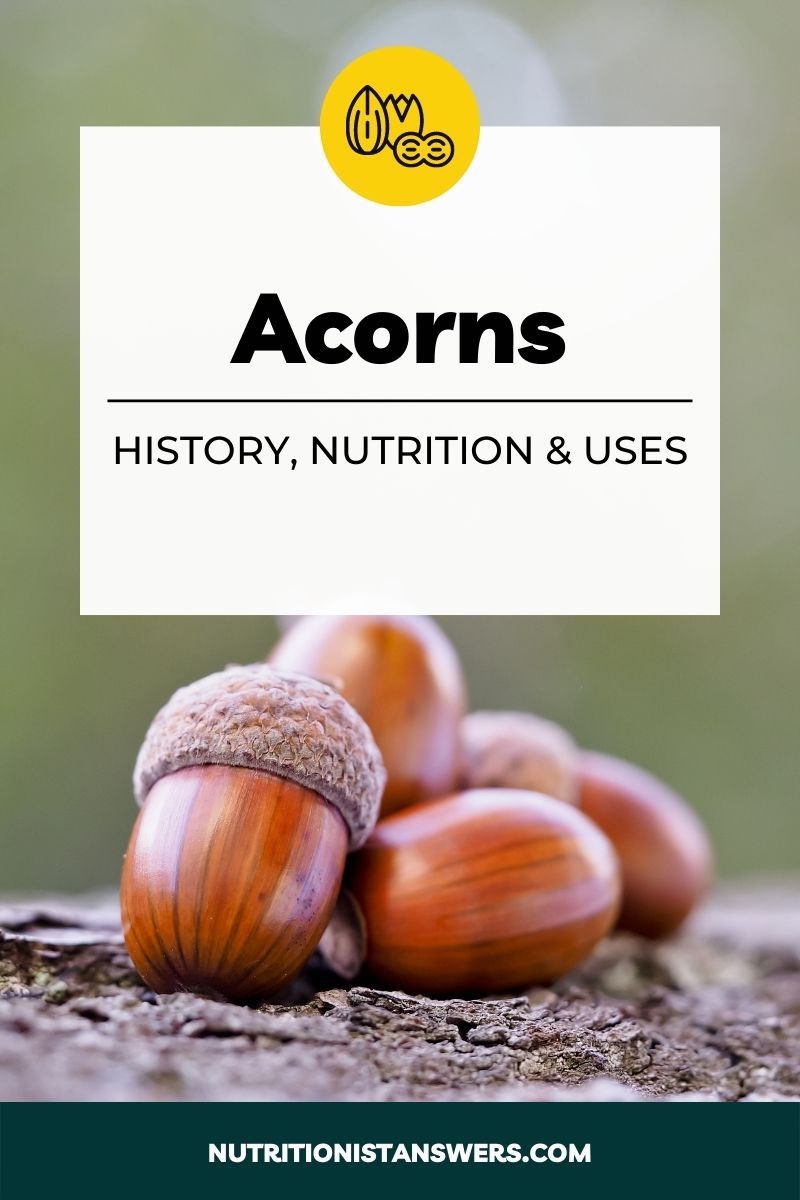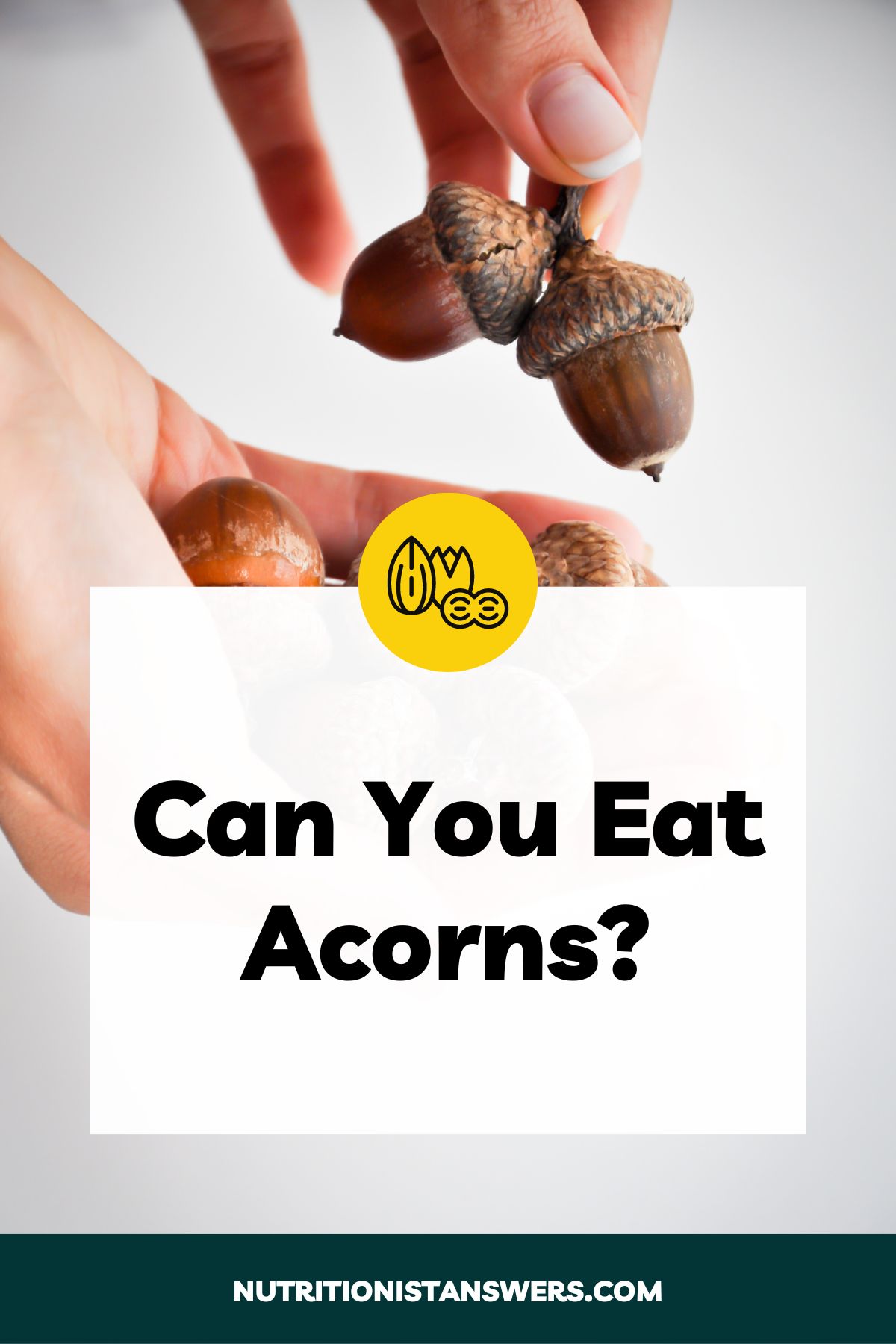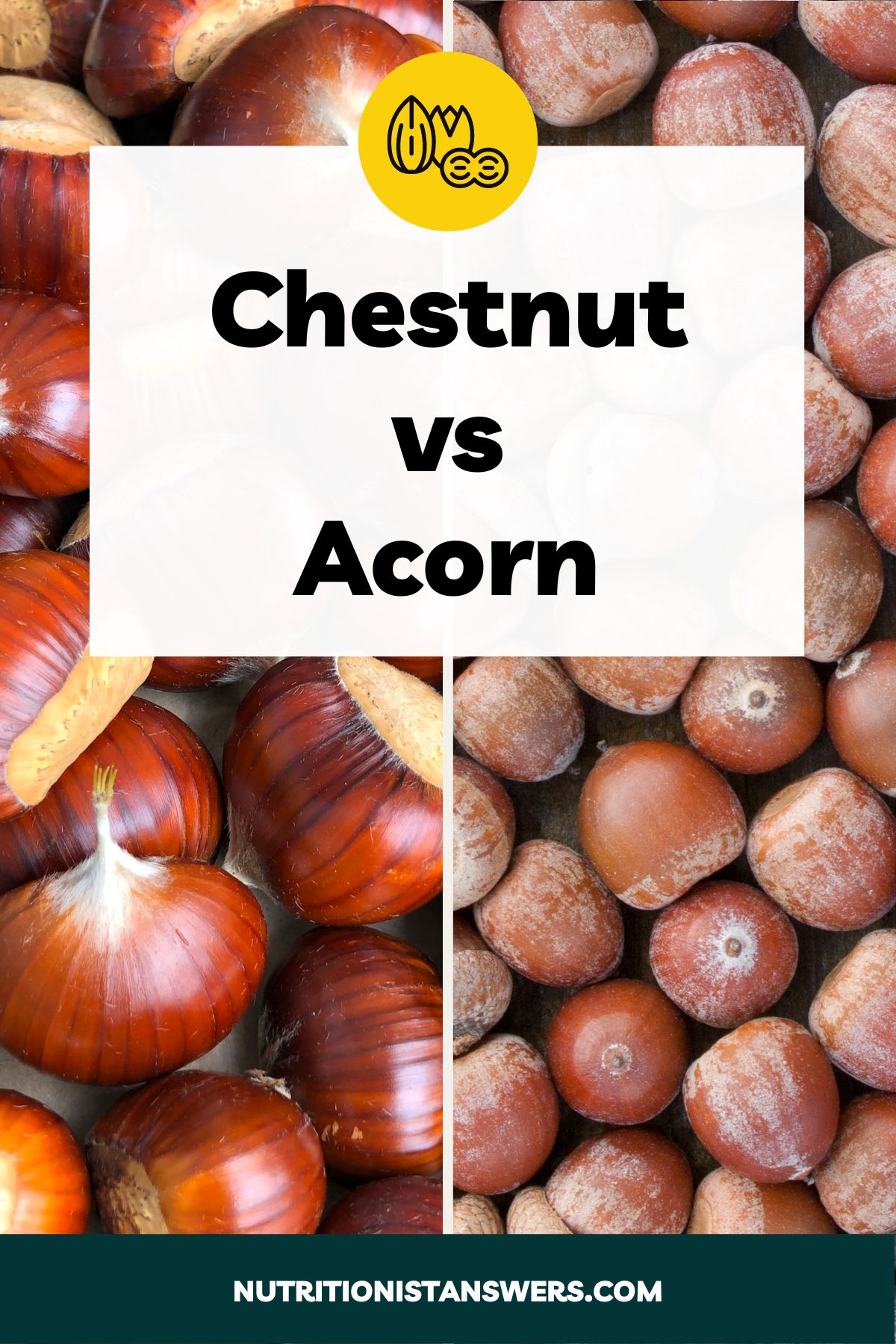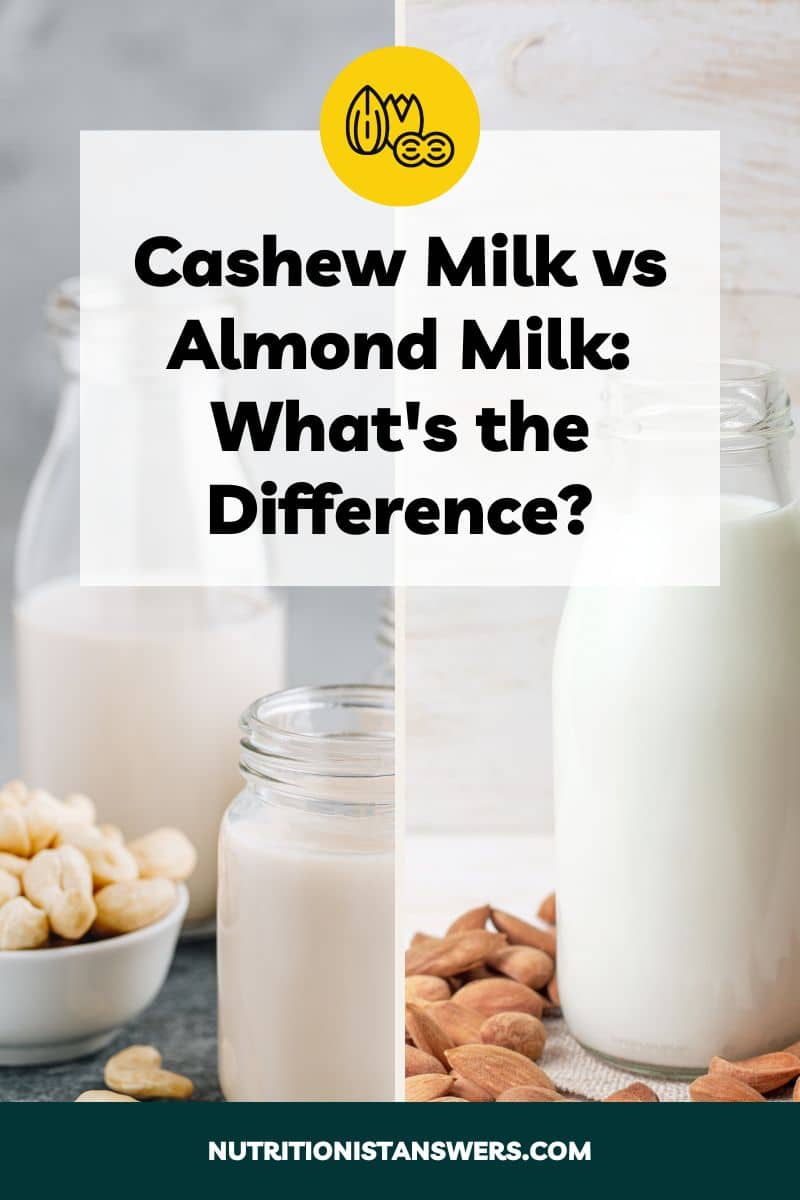Acorns were once a staple food in many cultures around the world but haven’t been as widely consumed in recent years.
Today, they are enjoying a resurgence in popularity due to their nutritional value, unique flavor, and versatility.
This guide will teach you everything you need to know about acorns, from their history and nutritional benefits, to how to select, store, and prepare them.
What are acorns?
Acorns are nuts produced by oak trees (1).
For thousands of years, they have been an important component of many cultures’ cuisines around the world (1, 2).
The earliest evidence of humans using acorns for food dates back to the Mesolithic Age (around 8000 BC) in Western Europe (3).
At one time, acorns made up close to 50% of the diet of Native Americans living along the West Coast of the United States, and they are still used today to make acorn flour and soup (3, 4).
As recently as the early 1900s, acorns were widely used in the Mediterranean region (mainly in Spain and Italy) for bread making and as a coffee substitute (5).
Typically, acorns are eaten whole or processed into oil or flour, which can then be used to make a variety of dishes, including soup, porridge, cake, bread, and hot drinks (1).
Is an acorn a nut?
Yes, an acorn is a nut, which is defined as a hard-shelled pod that contains both the fruit and seed of a plant (2).
Are acorns seeds?
Technically, acorns are nuts that contain a single seed (2).
What tree do acorns come from?
Acorns are produced by trees belonging to the Quercus (oak) genus. There are more than 500 species of oak trees found worldwide (2, 3).
Where do acorns grow?
Acorns grow in temperate and tropical regions wherever oak trees are present — mainly in North America, Europe, and Asia (3, 6).
When are acorns harvested?
Acorns are harvested in the fall.
They start the maturation process in late May and begin to fall to the ground between September and November (7).
Acorn nutrition facts
Calories
Acorns provide 144 calories in each 1-ounce serving (8).
Compared to other nuts, acorns are slightly lower in calories (by about 20-40 calories per serving) (9, 10, 11).
Macronutrients
Here’s the macronutrient breakdown for 1 ounce (28 grams) of dried acorns (8, 12):
- Carbohydrates: 15 grams
- Fiber: 4 grams
- Protein: 2 grams
- Fat: 9 grams
- Saturated fat: 1.2 grams
- Monounsaturated fat: 5.6 grams
- Polyunsaturated fat: 1.7 grams
Micronutrients
A 1-ounce (28-gram) serving of dried acorns provides the following vitamins and minerals (8, 13):
- Vitamin A: 392 mcg RAE (44% DV)
- Copper: 0.2 mg (22% DV)
- Vitamin E: 3 mg (20% DV)
- Manganese: 0.4 mg (17% DV)
- Vitamin B6: 0.2 mg (12% DV)
- Folate: 33 mcg (8% DV)
- Pantothenic acid: 0.3 mg (6% DV)
- Magnesium: 23 mg (5% DV)
- Potassium: 201 mg (4% DV)
- Niacin: 0.7 mg (4% DV)
- Thiamin: 0.04 mg (3% DV)
- Riboflavin: 0.04 mg (3% DV)
- Phosphorus: 29 mg (2% DV)
- Iron: 0.3 mg (2% DV)
- Zinc: 0.2 mg (2% DV)
- Calcium: 15 mg (1% DV)
- Selenium: 0 mcg (0% DV)
- Vitamin C: 0 mg (0% DV)
Tannins in acorns
Raw acorns are naturally high in tannins, a group of bitter and astringent compounds that act as part of a plant’s defense mechanism against insects (2).
Tannins are sometimes referred to as “antinutrients,” because they can bind to minerals and prevent them from being absorbed in the intestines (1).
There have been some reports of raw acorns causing severe diarrhea and kidney damage in animals when consumed in large quantities (2, 14).
It’s possible that similar effects could occur in humans, but there haven’t been any peer-reviewed studies on the toxicity of raw acorns.
Because of these concerns, it is best to leach acorns before consuming them. This involves soaking or boiling, which significantly reduces the tannin content and removes the bitter flavor (5).
How to select
Where to buy acorns
Unless you’re open to foraging, acorns can be pretty difficult to find. They’re not available at most grocery stores.
Some Asian markets may carry acorn flour (sometimes labeled as acorn starch), which is often used to make acorn jelly — a popular Korean dish.
Another option is to purchase one of these acorn products online:
Whole acorns
While whole acorns are almost never available for purchase in stores, they can be foraged wherever oak trees are found.
Acorns make a great snack, but you must first remove the hard outer shell and soak or boil them to remove tannins and reduce bitterness.
Acorn flour
After acorns have been shelled and leached to reduce their tannin content, they can be dried and ground into flour (1).
Acorn flour has similar properties to grain-based flours and can be used as a gluten-free, grain-free flour alternative in baked goods.
If you want to preserve the most flavor and starch possible in your acorn flour, you can also make cold-processed acorn flour, which involves almost no heating at all. Just lots of soaking and time!
Acorn oil
To make acorn oil, acorns are dried, shelled, and then pressed raw, to extract the oil, much like the way olive oil is produced.
Acorn oil is nutty and buttery and is best used raw to preserve its delicate flavor. It can be mixed into salad dressings, drizzled over roasted vegetables, or enjoyed as a dipping or finishing oil.
How to store
Whole, unshelled acorns should be thoroughly dried, then stored in a cool, dry place and used within a few months.
Shelled acorns and acorn flour have a shorter shelf life and should be stored in an airtight container in the fridge or freezer.
Acorn oil should be stored in the fridge for up to a year to preserve its flavor and prevent it from going rancid.
How to prepare
1. Acorn bread
Acorn flour can be used to make bread — it adds a nutty flavor and gives the final product a denser texture.
Typically, it is used alongside other flours to help the bread hold together.
2. Acorn pancakes
To make acorn pancakes, simply replace half of the all-purpose flour in your favorite pancake recipe with acorn flour.
Top them with fruit, nuts, and a drizzle of maple syrup for a filling breakfast or snack.
3. Acorn porridge
Consider swapping out oatmeal with acorn flour for a delicious breakfast porridge.
To do this, simmer acorn flour in water or milk over medium heat until it thickens. Stir in some honey and top with fruit, seeds, and spices
4. Acorn coffee
Acorns are naturally caffeine-free and can be used as a coffee substitute for people who want to limit their caffeine intake.
Mix a few tablespoons of roasted ground acorns with a cup of boiling water, then strain before serving.
5. Roasted acorns
Just like other nuts, acorns can make a delicious snack, especially when roasted.
To roast acorns, toss leached shelled nuts with olive oil and salt, and bake at 350 degrees Fahrenheit for 20 to 60 minutes or until they turn brown and smell fragrant. The desired brownness level depends on how you plan to use them.
Final thoughts
Acorns have a long history of use as a food source, and they’re a good source of many nutrients, including vitamins A and E.
They can be used in place of other ingredients to make acorn bread, pancakes, porridge, and even coffee.
If you can get your hands on them, be sure to give them a try!
Want to learn more? Check out our full list of foods A to Z.
Amy Richter is a Registered Dietitian Nutritionist based in Missouri. She is an experienced nutrition writer and medical advisor for Healthline and Medical News Today. Amy is passionate about all things food-related and enjoys translating complex science into easy-to-understand articles.





